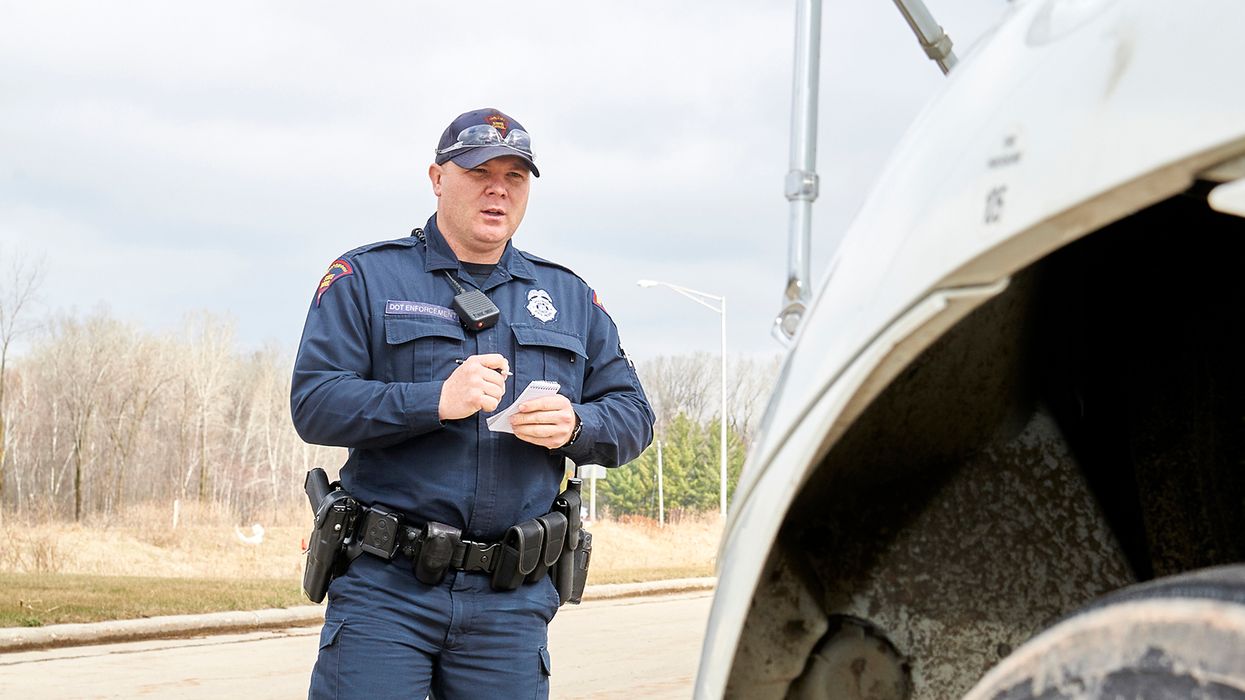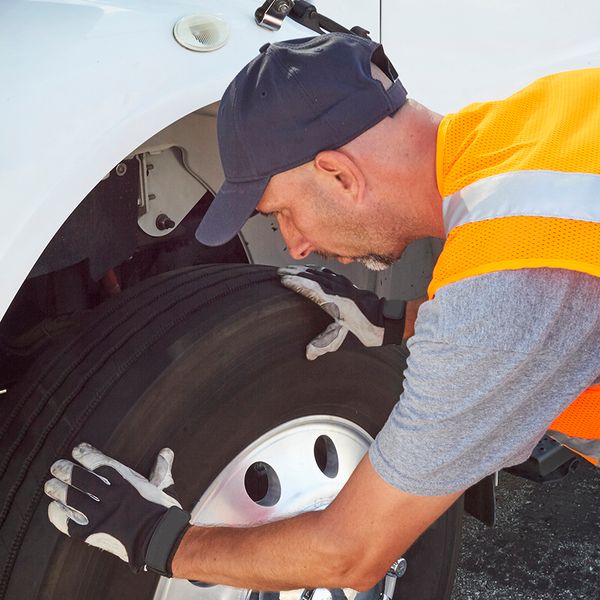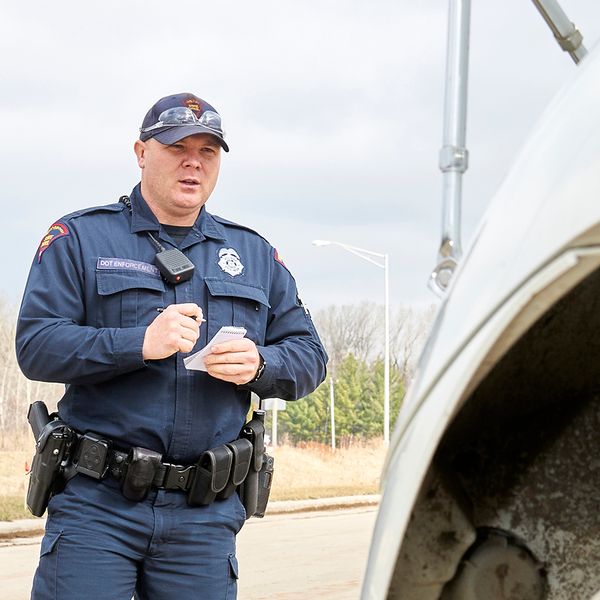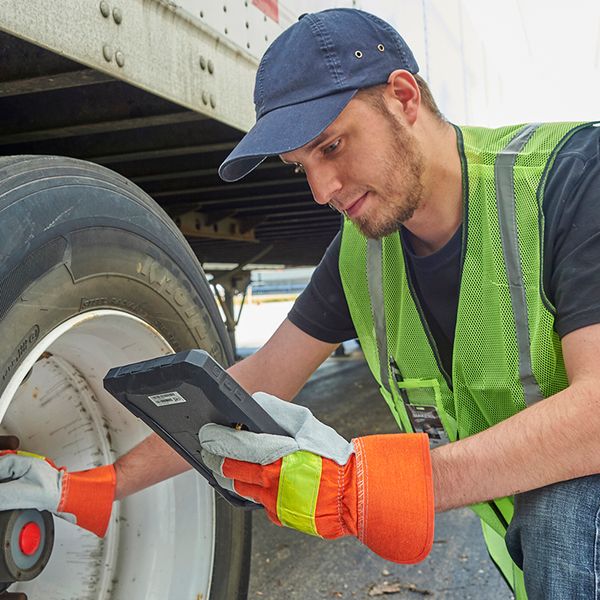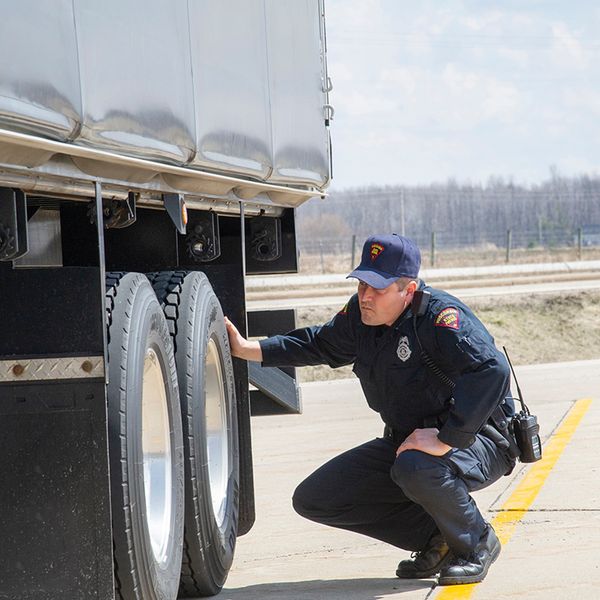Avoid the ‘big 3’ OOS violations
Fewer vehicles and drivers than usual were placed out of service (OOS) during this year’s Roadcheck inspection event, but the top violations remained largely the same. As in previous years, brakes, tires, and lights played a prominent role.
Of the roughly 17,500 vehicle OOS violations found during Roadcheck, 70 percent were in those three areas. Stated another way, the average motor carrier can cut its roadside OOS violations by nearly three-quarters by getting brake, light, and tire violations under control.
Violations don’t appear out of nowhere
Most brake, light, and tire problems don’t just pop up overnight. They can generally be found during a routine inspection-and-maintenance process — if someone takes the time to look.
The following are some key points to help catch problems early so they can be corrected before your next roadside inspection.
Brakes
- Two of the most common brake violations are improper adjustment and damaged brake lines. Both take time to develop, so they can usually be spotted early.
- Don’t rely on drivers’ inspections alone. Include close inspection of brakes on a routine schedule as part of your preventive maintenance program, and ensure your brake inspectors are qualified (see 49 CFR 396.25).
- When in doubt, review the regulations. There are specific standards to be met for almost all brake components. In sum, all required brakes must be present, in good condition, and working correctly.
- Don’t modify the brake system or you might run afoul of the manufacturing standards.
- Most modern vehicles must have functioning automatic slack adjusters and antilock brake systems.
Lights
- Review not only the FMCSA’s lighting rules in 393.11 but also the manufacturing standards in 571.108. In fact, the latter is the only place you’ll find details about conspicuity taping requirements.
- Maintain what’s there. Manufacturers must meet all current lighting standards, so if you “maintain it the way you bought it,” it should be compliant.
- Check all the lights, reflectors, and tape during every inspection. If problems are found, they should be corrected, even if it means rewiring.
- Remind drivers to keep their lights and reflective tape clean.
- Equip vehicles with spare bulbs and fuses (see 393.95).
Tires
- Review the rules in 393.75, as well as the inspection rules in 397.17 if you haul hazmat.
- Make sure drivers and technicians inspect every tire for proper inflation, cuts, gouges, separations that expose cord, and any tread that has become thinner than required. Keep in mind that “barely compliant” tread may become noncompliant during the next trip.
- Most tire failures are due to improper inflation. Use accurate tire gauges and make sure inflation is being checked regularly.
- If any tire is found with pressure lower than expected, put it through a full leak inspection as soon as possible.
| False logs were a common driver OOS violation, at 26.4%. Click here to learn how to spot false logs like a pro! |
Roadcheck 2023 North American Results
In the U.S., inspectors discovered at least one OOS violation on 19.3 percent of vehicles and 5.8 percent of drivers. This is down from 23.8 percent and 6.2 percent in 2022, respectively.
Top 5 Vehicle OOS Violations
- Brake systems (25.2%)
- Tires (19.3%)
- Defective service brakes (14.1%)
- Cargo securement (12.4%)
- Lights (11.5%)
Top 5 Driver OOS Violations
- Hours of service (41.1%)
- False logs (26.4%)
- Other (moving violations, cell-phone use, etc.) (9.2%)
- Canceled/revoked license (7.9%)
- No medical card (4.6%)
Top 5 Hazmat OOS Violations
- Loading (39.4%)
- Shipping papers and “Other”(tied at 18.6%)
- Placards (15.7%)
- Training certificate (4.7%)
- Markings (1.7%)
Key to remember: Brake, light, and tire violations were (once again) common violations found during Roadcheck. Tackling these violations takes a concerted effort but can result in big rewards.

